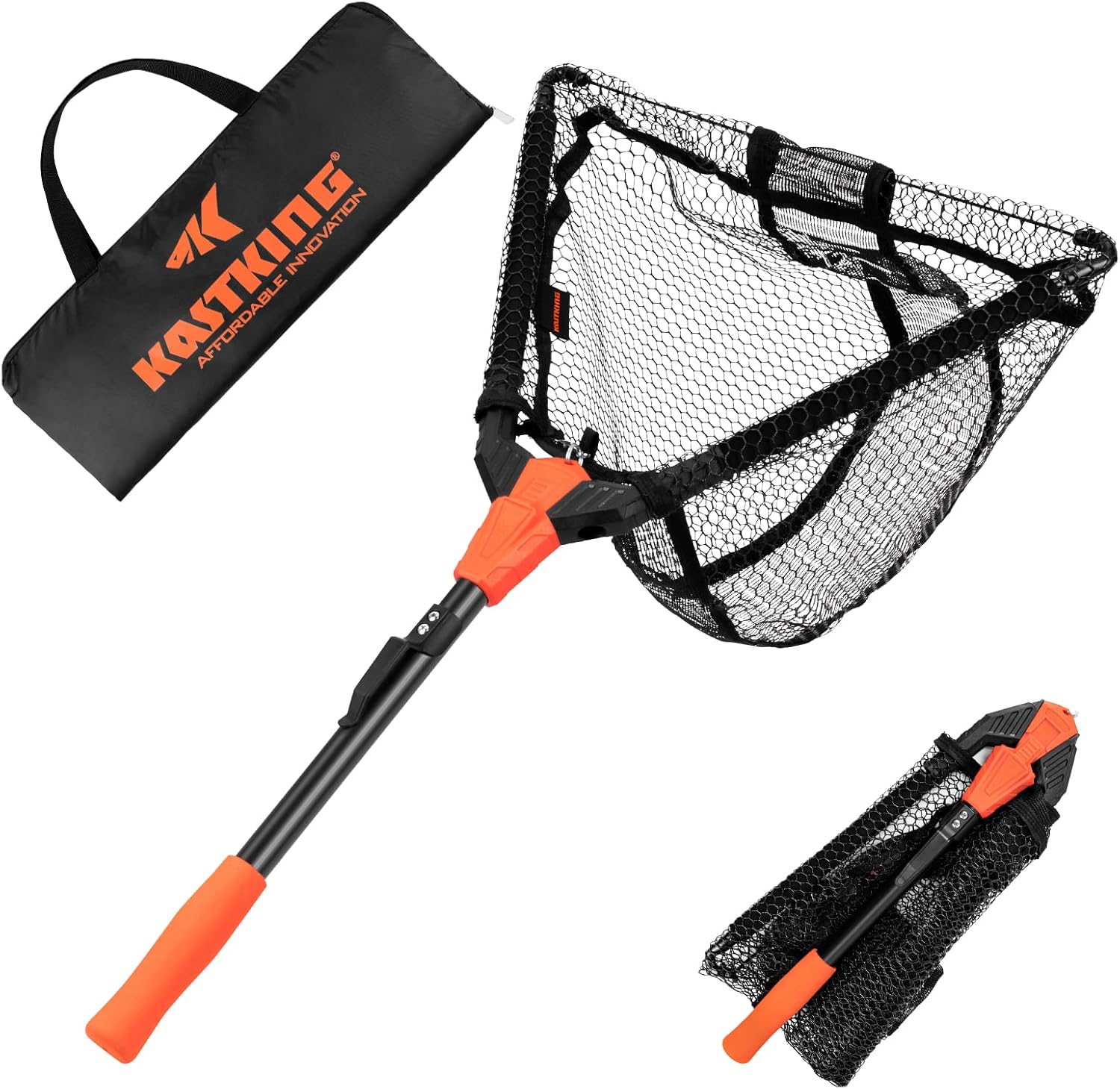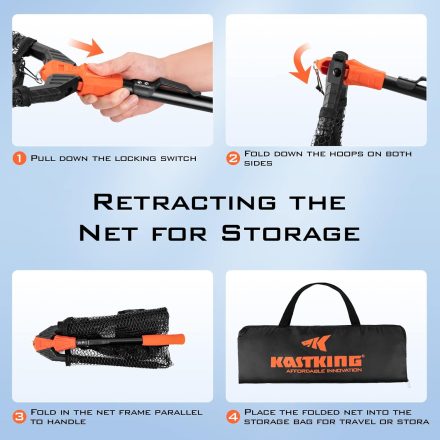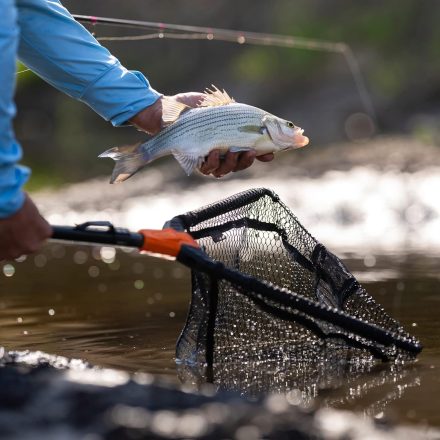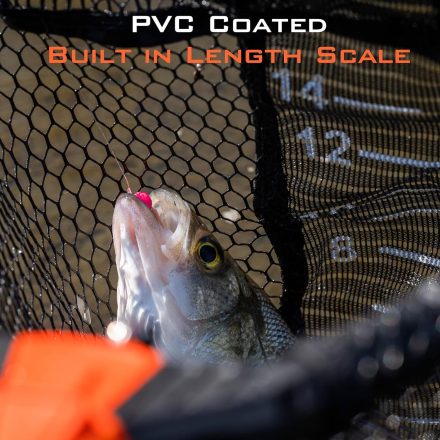Fly fishing nets is more than just a method of catching fish; it’s a tradition, a challenge, and for many, a form of art. Among the essential tools in fly fishing is the fishing net. While it may seem like a simple accessory, a fly fishing net is crucial in ensuring a successful and ethical catch. This essay will explore the various aspects of fly fishing nets, including their types, materials, history, usage, and how to choose the right one for your needs. click for gripper
The Evolution of Fly Fishing Nets
- Historical Overview of Fly Fishing Nets
- Early Use of Nets: The use of nets in fishing dates back thousands of years. Early nets were crafted from natural materials such as vines, reeds, and grasses. These primitive nets were used in various cultures worldwide, showing the universal appeal and necessity of fishing as a source of sustenance.
- Development in Fly Fishing: As fly fishing developed as a specific angling method, particularly in the rivers of Europe, the design and use of nets became more specialized. Early fly fishing nets were rudimentary but functional, evolving over time to meet the specific needs of fly fishers.
- The Role of Nets in Fly Fishing
- Ethical Considerations: In the practice of catch and release, which is a common practice in fly fishing, the net plays a vital role in minimizing harm to the fish. The use of a well-designed net ensures that the fish can be safely released back into the water without injury.
- Practicality: A fly fishing net allows the angler to efficiently land the fish, reducing the risk of the fish escaping after it has been hooked. This is particularly important when dealing with species that are known for their agility and strength.
Types of Fly Fishing Nets
Types of Fly Fishing Nets
- Overview of Different Net Designs
- Traditional Landing Nets: These nets have a long handle and a large hoop, designed to scoop up the fish as it is brought close to the angler. Traditional landing nets are often used from boats or when wading in deeper water.
- Catch and Release Nets: Specifically designed for the ethical practice of catch and release, these nets feature a softer, more fish-friendly mesh that reduces damage to the fish’s scales and slime coat.
- Rubber Nets: Rubber nets have gained popularity due to their durability and minimal impact on fish. The rubber material is gentle on fish, making it a preferred choice for anglers who prioritize catch and release.
- Compact Nets: For anglers who prefer a more portable option, compact nets are small and lightweight, often designed to be folded or collapsed for easy transport.
- Specialized Nets
- Boat Nets: Designed for use from a boat, these nets typically have a longer handle to reach fish that are farther from the boat. The hoop size is often larger to accommodate bigger fish.
- Wading Nets: Wading nets are smaller and lighter, designed to be carried easily while wading in rivers or streams. These nets often feature a clip or attachment point for easy access while fishing.
- Custom Nets: Some anglers prefer custom-made nets, which can be tailored to specific preferences in terms of size, material, and design. These nets often feature personalized touches such as engravings or custom handles.
Materials Used in Fly Fishing Nets
- Frame Materials
- Wood: Traditionally, fly fishing nets were made with wooden frames, which are still popular today for their aesthetic appeal and lightweight properties. Woods such as teak, maple, and ash are commonly used, each offering a unique grain and color.
- Aluminum: Aluminum frames are known for their durability and lightweight nature. They are resistant to rust and corrosion, making them ideal for use in various fishing environments.
- Composite Materials: Modern advancements have led to the use of composite materials in net frames. These materials offer a combination of strength, flexibility, and lightweight properties, often outperforming traditional materials.
- Netting Materials
- Nylon: Nylon is a common material used in netting due to its strength, durability, and resistance to rot. However, traditional nylon nets can be rough on fish, potentially damaging their scales.
- Rubber: Rubber netting is favored for its fish-friendly properties. It is soft, flexible, and does not harm the fish’s protective slime layer, making it an excellent choice for catch and release practices.
- Eco-friendly Materials: As sustainability becomes more important in fishing, some manufacturers have begun using eco-friendly materials such as biodegradable fibers. These nets aim to reduce the environmental impact of fishing gear.
Importance of Choosing the Right Fly Fishing Net
Matching the Net to the Environment
River and Stream Fishing: When fishing in rivers and streams, the net needs to be lightweight and easy to maneuver in fast-flowing water. Compact wading nets are ideal for these environments, allowing for quick and efficient fish handling.
Lake and Pond Fishing: In still water environments like lakes and ponds, anglers may encounter larger fish, requiring a more robust net with a larger hoop size and stronger frame.
Saltwater Fly Fishing: Saltwater environments are harsh on gear due to the corrosive nature of salt. Nets used in saltwater fly fishing need to be made from materials that can withstand corrosion, such as anodized aluminum or stainless steel. (Fly Fishing Nets)
Size and Weight Considerations
Longer handles are beneficial when fishing from a boat or in deep water, while shorter handles are better suited for wading or bank fishing.
Hoop Size: The size of the hoop should match the size of the fish you are targeting. A larger hoop allows for easier landing of bigger fish, but can be cumbersome to carry.
Weight: The weight of the net is an important factor, especially when wading for long periods. Lightweight nets reduce fatigue and are easier to carry throughout a fishing trip.
How to Use a Fly Fishing Net Effectively
Landing the Fish
Positioning: Properly positioning the net is crucial to successfully landing the fish. The net should be submerged in the water, with the hoop open and ready to scoop the fish as it is guided towards the angler.
Timing: Timing is key when using a net. Premature attempts can lead to the fish bolting and potentially escaping.
Minimizing Stress on the Fish: To reduce stress on the fish, the netting process should be quick and smooth. The fish should be guided gently into the net without unnecessary struggling.
Handling the Fish
Supporting the Fish: Once in the net, the fish should be supported gently to avoid injury. The net should be lifted slowly, allowing the fish to remain in the water as much as possible.
Removing the Hook: If practicing catch and release, the hook should be removed carefully while the fish remains in the net. Using barbless hooks can make this process easier and less stressful for the fish.
Releasing the Fish: To release the fish, lower the net into the water and allow the fish to swim out on its own. Avoid tossing the fish or handling it excessively, as this can cause harm.
Maintenance and Care of Fly Fishing Nets
Cleaning and Drying
Post-Fishing Cleaning: After each fishing trip, it’s important to clean the net thoroughly to remove any dirt, debris, or fish slime. A gentle rinse with fresh water is usually sufficient, but stubborn residues may require a mild soap.
Drying: Proper drying is crucial to prevent mold and mildew, especially with wooden frames. The net should be hung in a well-ventilated area, out of direct sunlight, to dry completely before storage. (Fly Fishing Nets)
Storage Tips
Avoiding Damage: Nets should be stored in a way that prevents them from being crushed or bent. Hanging them up or placing them on a flat surface is ideal.
Long-Term Storage: For long-term storage, especially over the winter months, nets should be kept in a cool, dry place.
Repairing and Replacing Netting
Identifying Wear and Tear: Regular inspection of the netting and frame can help identify any wear and tear that may require attention. Frayed netting or cracks in the frame should be repaired promptly to prevent further damage.
Repair Kits: Many manufacturers offer repair kits that include replacement netting and tools for minor repairs. For major damage, it may be necessary to replace the net or seek professional repair services.
Cleaning and Drying
Post-Fishing Cleaning: After each fishing trip, it’s important to clean the net thoroughly to remove any dirt, debris, or fish slime. A gentle rinse with fresh water is usually sufficient, but stubborn residues may require a mild soap.
Drying: Proper drying is crucial to prevent mold and mildew, especially with wooden frames. The net should be hung in a well-ventilated area, out of direct sunlight, to dry completely before storage.
Storage Tips
Avoiding Damage: Nets should be stored in a way that prevents them from being crushed or bent. Hanging them up or placing them on a flat surface is ideal.
Long-Term Storage: For long-term storage, especially over the winter months, nets should be kept in a cool, dry place.
Repairing and Replacing Netting
Identifying Wear and Tear: Regular inspection of the netting and frame can help identify any wear and tear that may require attention. Frayed netting or cracks in the frame should be repaired promptly to prevent further damage.
Repair Kits: Many manufacturers offer repair kits that include replacement netting and tools for minor repairs. For major damage, it may be necessary to replace the net or seek professional repair services. (Fly Fishing Nets)
Ethical Considerations in Fly Fishing
- Catch and Release Practices
- Minimizing Harm: Using the right net is one of the most effective ways to minimize harm to the fish during catch and release. Rubber or soft mesh nets are less likely to remove scales or damage the fish’s protective slime layer.
- Handling Techniques: Proper handling techniques, such as wetting hands before touching the fish and avoiding prolonged air exposure, are essential in ensuring the fish’s survival after release.
- Sustainable Fishing
- Eco-Friendly Nets: The rise in demand for sustainable fishing gear has led to the development of eco-friendly nets made from biodegradable or recycled materials. These nets reduce the environmental impact of fishing while still providing the necessary functionality.
- Supporting Ethical Brands: Anglers can support ethical practices by choosing nets from brands that prioritize sustainability and responsible manufacturing practices.
- Conservation Efforts
- Preserving Fish Populations: Ethical fly fishing practices, including the use of appropriate nets, contribute to the conservation of fish populations. By minimizing harm and releasing fish in good condition, anglers can help ensure the sustainability of the sport.
- Engaging in Conservation: Many fly fishers are also involved in conservation efforts, such as habitat restoration and fish stocking programs. Using ethical gear is just one way to contribute to these efforts. Fly Fishing Nets
Innovations and Trends in Fly Fishing Nets
- Technological Advancements
- Smart Nets: Some modern fly fishing nets are incorporating technology, such as built-in scales or GPS tracking, to enhance the fishing experience. These innovations offer added convenience and functionality, though they are still in the early stages of adoption.
- Customization and Personalization
- Custom Handles and Frames: Many anglers are opting for custom-made nets that reflect their personal style. From engraved handles to unique frame shapes, customization options are becoming increasingly popular.
- Artisanal Nets: Artisanal nets, handcrafted by skilled makers, offer a unique blend of functionality and artistry. These nets are often made from premium materials and feature intricate designs, making them as much a collector’s item as a practical tool.
- The Future of Fly Fishing Nets
- Sustainability Focus: As environmental awareness grows, the future of fly fishing nets is likely to be shaped by sustainability. This could include the use of recycled materials, biodegradable netting, and more eco-friendly manufacturing processes.Fly Fishing Nets
- Adaptation to Changing Fishing Practices: As fly fishing continues to evolve, nets will need to adapt to new techniques, target species, and environments. This could lead to the development of specialized nets for emerging fishing practices.
Conclusion
Fly fishing nets are an indispensable tool in the angler’s arsenal, playing a critical role in the successful and ethical capture of fish. From their historical origins to the latest innovations, these nets have evolved to meet the diverse needs of fly fishers around the world. Whether you’re a seasoned angler or just beginning your fly fishing journey, understanding the different types of nets, their materials, and how to use and care for them will enhance your fishing experience. As the sport continues to grow and evolve, so too will the tools that accompany it, ensuring that fly fishing remains a rewarding and sustainable pursuit for generations to come. Fly Fishing Nets






